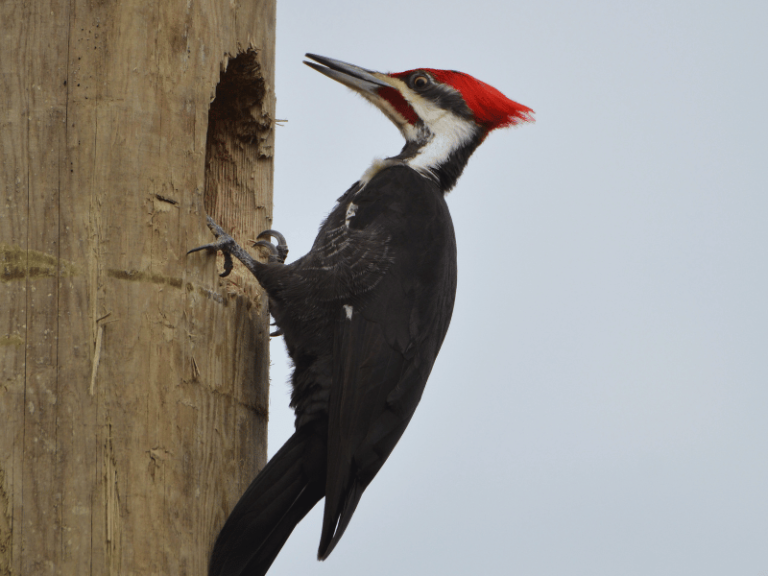Woodpeckers carve holes and forage on the vertical surface of tree trunks. This kind of activity among birds is indeed quite rare.
Why can woodpeckers operate flexibly on vertical surfaces without falling?
Firstly, the growth pattern of the woodpecker’s hind limbs is very special. Their entire hind limbs are short, thick, and powerful; especially their toes, which are unlike the typical three toes forward and one toe backward arrangement of most birds. Instead, they have two toes pointing forward and two toes pointing backward, with sharp hooked claws at the tips. This type of toe configuration allows them to grip trees as firmly as nails on a broken bowl. Additionally, their tail feathers are long and large, strong and straight, with particularly thick and elastic feather shafts, resembling a steel rod running through the middle of the tail feathers. These exceptionally strong tail feathers are divided into two bundles, making the tail end forked. When working, their two feet grip the tree surface, forming two force points on a lever. The forked tail end acts as two support points on the lever. This allows their head, which is used for chiseling wood, to operate without any concerns. With this series of specialized adaptations, woodpeckers can perform vertical activities on tree trunks as effortlessly as running on flat ground; even stripping bark and drilling holes in trees is no problem for them.
Woodpeckers can climb up tree trunks quickly and also descend smoothly. It seems they climb up and down more easily than moving horizontally. However, if forced to walk on flat ground, they find it extremely difficult.

